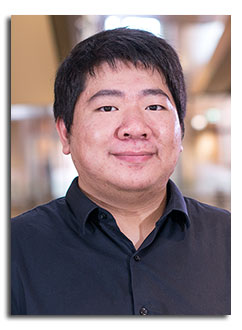
Abstract
Colloidal quantum dots (QDs) are nano-sized semiconductor particles synthesised from solution-based chemical processes. They can be well dispersed in solvents to form “QD inks”, which allow the fabrication of low-cost, flexible thin film solar cells through painting or spray-coating. In addition, due to the quantum size effect, the absorption ability of QDs can be tuned across the entire solar spectrum (including infrared) through particle size control. Their electrical properties are also highly tunable through simple chemical processes such as dip-coating.
This talk will provide a general introduction to the works of the colloidal QD group at UNSW. It consists of two parts. The first part will be specifically on lead selenide QD solar cells that we currently hold the highest reported efficiency in literature. Aspects including surface engineering, the combination with perovskite QDs, multiple exciton generation, and hot carrier effects will be discussed. In the second part, the recent progresses in lead sulphide QDs and other materials from the group will be briefly updated.
Click here to see all available video seminars.
Click here to go to the SPREE HOMEPAGE.
Brief Bio
Zhilong completed his bachelor degree in Renewable Energy Systems at the ANU. He then moved to UNSW for his PhD studies with Shujuan Huang, Robert Patterson and Gavin Conibeer in the Advanced Photovoltaic Concepts group at UNSW. He has recently submitted his PhD thesis. His research interests include the synthesis of various types of nanoparticles and the fabrication of solar cells based on these materials. He was particularly interested in lead selenide quantum dot solar cells. After developing several new surface treatments he managed to fabricate devices that hold the highest reported efficiency of this type of solar cells.
